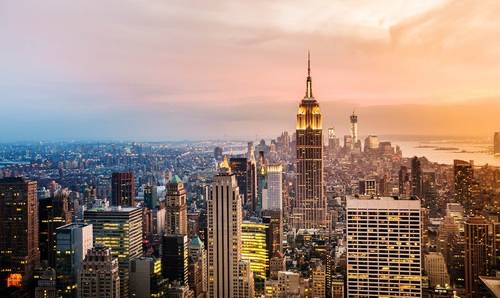In just a few short weeks, COVID-19 changed everything. No industry has been left untouched, and it’s pretty safe to say that most industries may never look the same again, at least for the foreseeable future.
Few industries have felt the impacts of the global pandemic more than real estate, construction and development. This really shouldn’t come as much of a surprise though. Real estate development has always been at the whim of what buyer’s want — a behavior that we know is ever-changing. It is a developer’s job to anticipate these changes, but COVID-19 has veered everything a little off course, causing real estate developers to course correct.
Innovation and forward-thinking are critical to success in the industry, but the coronavirus has made a developer’s ability to re-evaluate and realign everything from a building’s floor plan to its digital amenities at a moment’s notice even more important.
Since the end of May, unemployment claims have hit 36 million.
Businesses across the nation were forced to close, implement layoffs, or remotely acclimate their entire workforce to a virtual role, practically overnight. That, in addition to state-enforced stay-at-home and shelter-in-place orders, resulted in hundreds of millions of people spending more time in their homes than ever before. The entire definition of ‘home’ has been transformed.
Homes are no longer just a safe space, they can be classrooms, remote offices, gyms, anything we want them to be. What buyers want — and more importantly what they need — from their homes will look very different post-COVID. As people redefine their dream homes, real estate developers must reimagine construction and design.
More responsible amenities
Over this last decade, real estate development was very extravagant: the bigger and flashier, the better. Property design was centered around open, interactive spaces meant to encourage a sense of community, and developers were quick to implement digital innovations like touch-screen technology to declutter and modernize buildings.
But just months into the pandemic, these design concepts are now not practical for social distancing or flexible to accommodate both distance and community. Instead of vastness, buyers are becoming more interested in privacy and distance. This doesn’t mean that buyers still won’t want the bigger and the better amenities, but what developers once imagined these amenities to be might just need to be adapted a bit.
Instead of fluid floor plans, for example, a clubhouse might need to be redesigned with smaller, separate rooms. Similarly, health and wellness have always been a hot commodity, but this has been increased tenfold since the coronavirus. Instead of cigar lounges, people want gyms and yoga studios. There is also an increased demand for air purification, aromatherapy, water filtration, and improved clearing protocols
Even the materials we use in construction will shift in response to a higher demand for cleanliness. People will want surfaces that are easier to clean and hold less bacteria, like luxury vinyl flooring, antimicrobial ceramic, and copper appliances.
But more responsible design is where technology thrives, not to mention it’s one of the most important amenities for potential buyers. Innovations like thumbprint technology have made our lives easier, but people want even less contact with humans and surfaces. They want automated entry, optical recognition, and smart intercom systems; they want proptech.
Responsible design isn’t a complete overhaul of what the future of real estate was shaping up to be, it’s just reenvisioning how rooms, amenities, technology, and materials can be transformed in these spaces.
More transparency throughout the industry
The world could have never predicted the rapid spread of the coronavirus, nor could industry leaders have anticipated exactly how COVID-19 would shake up their entire operations. Yet, we had no choice but to adapt.
Developers must be visionaries, but completely course correcting numerous projects already in the works and restrategizing future plans takes time. One of the biggest changes in construction post-COVID will be a demand for more transparency and accountability from developers.
Today’s developers have likely never done as much pivoting as they have in the midst of this global pandemic, myself included. We are on the front lines of reshaping and future-proofing the industry. It’s up to us to set the standard. This demands that we are more transparent in our communication, which is something my company has always held in high esteem. For example, there was an unforeseen condition on a project, we make sure everyone is notified immediately so we can all start to work on a solution.
Real estate development is never predictable . There will always be unforeseen circumstances that thwart a project’s progress. Since COVID, many developers had to halt their projects to redesign certain elements, throw out old ideas and plan new ones on the fly, or even get creative with their budgets when money became tight. Without transparency and accountability, a seamless process from start to finish just wouldn’t be possible.
As people adjust to their new ‘normal,’ real estate developers are responsible for leading the charge of what real estate’s new normal looks like in our post-coronavirus world. We must work together to build a stable, resilient future.
Source: PropertyWire




